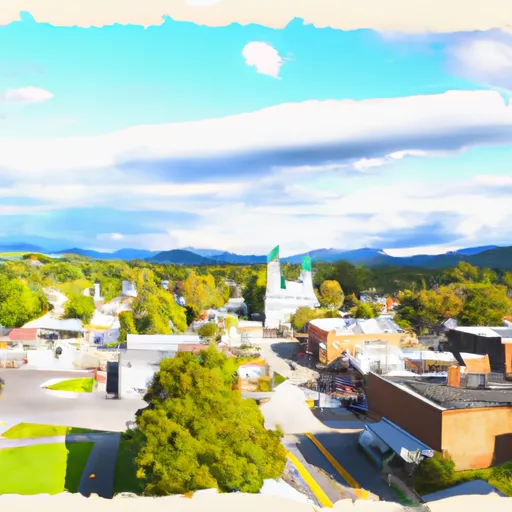-
 Snoflo Premium
Snoflo Premium
Get unlimited access to all our content
With no Ad interruptions! - Start Your Free Trial Login with existing account
Swanton
Eden Index
Climate
7.9
•
Recreation
3.1
•
Community
2.1
•
Safeguard
4.8/10

Swanton, Vermont is a charming town located in the northwest part of the state. The region experiences a diverse climate, with warm summers and cold winters. Summers are typically mild, with average temperatures ranging from 70°F to 80°F (21°C to 27°C). Winters can be quite cold, with average temperatures ranging from 15°F to 30°F (-9°C to -1°C). The area receives a moderate amount of precipitation throughout the year, with snowfall being common during winter months.
Swanton is home to several water bodies, including the Missisquoi River, which flows through the town. The river offers opportunities for fishing, canoeing, and kayaking. The Lake Champlain shoreline is also nearby, providing additional recreational activities such as swimming, boating, and fishing.
For outdoor enthusiasts, Swanton and its surrounding areas offer various recreational opportunities. There are numerous hiking trails nearby, including the Missisquoi Valley Rail Trail, which stretches for 26 miles, offering scenic views of nature and wildlife. In winter, snowshoeing and cross-country skiing are popular activities in the area. The town also has parks and green spaces where visitors can enjoy picnicking, camping, and birdwatching.
In summary, Swanton, Vermont offers a diverse climate with warm summers and cold winters. It is surrounded by water bodies like the Missisquoi River and Lake Champlain, providing opportunities for water-based recreational activities. The area also boasts beautiful hiking trails and outdoor spaces for various outdoor pursuits throughout the year.
What is the Eden Index?
The Snoflo Eden Index serves as a comprehensive rating system for regions, evaluating their desirability through a holistic assessment of climate health, outdoor recreation opportunities, and natural disaster risk, acknowledging the profound impact of these factors on livability and well-being.
Climate Health Indicator (CHI): 7.9
Swanton receives approximately
940mm of rain per year,
with humidity levels near 78%
and air temperatures averaging around
7°C.
Swanton has a plant hardyness factor of
4, meaning
plants and agriculture in this region thrive during a short period during spring and early summer. Most
plants will die off during the colder winter months.
By considering the ideal temperature range, reliable water supplies, clean air, and stable seasonal rain or snowpacks, the Climate Health Indicator (CHI) underscores the significance of a healthy climate as the foundation for quality living.
A healthy climate is paramount for ensuring a high quality of life and livability in a region, fostering both physical well-being and environmental harmony. This can be characterized by ideal temperatures, reliable access to water supplies, clean air, and consistent seasonal rain or snowpacks.
Weather Forecast
Streamflow Conditions
Richelieu
Area Rivers
Richelieu
Snowpack Depths
Richelieu
Reservoir Storage Capacity
Richelieu
Groundwater Levels
Recreational Opportunity Index (ROI): 3.1
The Recreational Opportunity Index (ROI) recognizes the value of outdoor recreational options, such as parks, hiking trails, camping sites, and fishing spots, while acknowledging that climate plays a pivotal role in ensuring the comfort and consistency of these experiences.
Access to outdoor recreational opportunities, encompassing activities such as parks, hiking, camping, and fishing, is crucial for overall well-being, and the climate plays a pivotal role in enabling and enhancing these experiences, ensuring that individuals can engage in nature-based activities comfortably and consistently.
Camping Areas
| Campground | Campsites | Reservations | Toilets | Showers | Elevation |
|---|---|---|---|---|---|
| North Beach | 137 | 163 ft | |||
| Burton Island | None | 126 ft | |||
| Mt. Philo State Park | 10 | 436 ft | |||
| Grand Isle State Park | None | 149 ft |
Nearby Fishing
Nearby Ski Areas
Catastrophe Safeguard Index (CSI):
The Catastrophe Safeguard Index (CSI) recognizes that natural disaster risk, encompassing floods, fires, hurricanes, and tornadoes, can drastically affect safety and the overall appeal of an area.
The level of natural disaster risk in a region significantly affects safety and the overall livability, with climate change amplifying these risks by potentially increasing the frequency and intensity of events like floods, fires, hurricanes, and tornadoes, thereby posing substantial challenges to community resilience and well-being.
Community Resilience Indicator (CRI): 2.1
The Community Resilience Indicator (CRI) recognizes that education, healthcare, and socioeconomics are crucial to the well-being of a region. The CRI acknowledges the profound impact of these elements on residents' overall quality of life. By evaluating educational resources, healthcare accessibility, and economic inclusivity, the index captures the essential aspects that contribute to a thriving community, fostering resident satisfaction, equity, and social cohesion.

